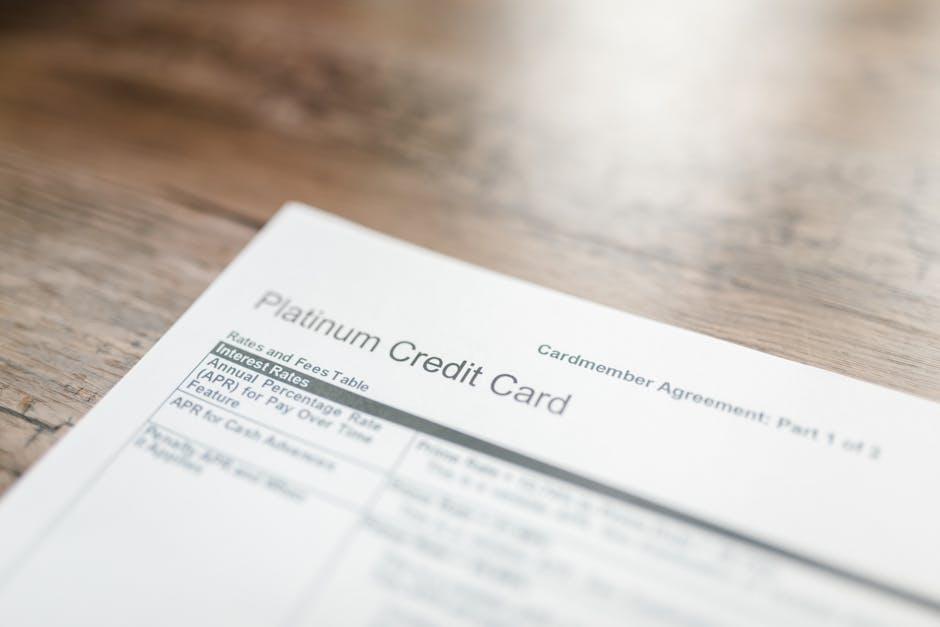In the intricate ballet of global finance, where every step and misstep reverberates through the corridors of power and commerce, interest rates are the unseen choreographers, dictating the rhythm of economic growth and stability. As central banks across the world tighten their monetary policies in response to inflationary pressures, the ripple effects of interest rate hikes are felt far and wide. Among the most profound impacts is the shift in corporate credit risk, a phenomenon that holds the potential to reshape the business landscape as we know it. This article delves into the complex interplay between rising interest rates and corporate credit risk, unraveling the implications for businesses large and small. Through a lens of authoritative analysis, we explore how these financial maneuvers influence corporate borrowing costs, debt sustainability, and the broader economic environment, offering insights into the challenges and opportunities that lie ahead for corporations navigating this turbulent financial epoch.
Navigating the Storm Understanding the Ripple Effects of Rising Interest Rates on Corporate Debt
As central banks adjust their monetary policies, the rising interest rates have become a formidable challenge for corporations worldwide. The increased cost of borrowing can significantly impact a company’s financial health, leading to a cascade of consequences. Companies with high levels of debt are particularly vulnerable, as their interest expenses rise, potentially squeezing profit margins and limiting cash flow. This can lead to a reevaluation of credit ratings, affecting their ability to secure future financing on favorable terms.
- Increased Debt Servicing Costs: As interest rates climb, companies face higher costs to service existing debt, which can lead to reduced capital for investment and growth.
- Credit Rating Downgrades: The strain on financial resources may prompt credit agencies to downgrade corporate credit ratings, increasing borrowing costs further.
- Liquidity Challenges: Tightened cash flows can limit a company’s ability to meet short-term obligations, posing a risk to operational stability.
In this complex environment, businesses must adopt strategic financial management practices to mitigate risks. This includes renegotiating debt terms, diversifying funding sources, and enhancing operational efficiencies to withstand the pressures of an evolving economic landscape.

Unveiling the Vulnerabilities How Interest Rate Hikes Expose Weaknesses in Corporate Creditworthiness
When central banks decide to increase interest rates, the ripple effects on corporate creditworthiness can be profound and multifaceted. Higher interest rates mean higher borrowing costs, which can strain a company’s cash flow and profitability. Companies with significant debt loads may find themselves in precarious positions, as the cost of servicing their debt escalates. This is particularly concerning for firms that have relied heavily on short-term financing or have substantial variable-rate debt. As interest expenses rise, these companies may struggle to maintain their financial health, leading to potential downgrades in their credit ratings.
The impact is not uniform across all sectors. Some industries are more vulnerable than others due to their capital-intensive nature or reliance on external financing. Consider the following vulnerabilities:
- Highly leveraged companies: Firms with high debt-to-equity ratios are at greater risk as their interest obligations increase.
- Cyclical industries: Sectors like construction and manufacturing may experience amplified effects due to fluctuating demand and capital requirements.
- Emerging markets: Companies operating in emerging economies may face additional challenges due to currency fluctuations and less stable economic conditions.
In this environment, prudent financial management and strategic debt restructuring become crucial for maintaining corporate solvency and investor confidence.
Strategic Shields Crafting Resilient Financial Strategies to Mitigate Increased Credit Risk
In the current economic landscape, where interest rates are climbing steadily, businesses must adopt robust financial strategies to shield themselves from escalating credit risks. Crafting a resilient financial strategy involves a multifaceted approach that focuses on both proactive and reactive measures. Risk assessment becomes paramount, with companies needing to thoroughly evaluate their existing debt portfolios and exposure to variable interest rates. By conducting comprehensive stress tests, businesses can identify potential vulnerabilities and develop contingency plans to counteract adverse scenarios.
To fortify their financial standing, companies should consider the following strategic actions:
- Refinancing Existing Debt: Locking in lower rates through refinancing can help stabilize cash flows and reduce the burden of future interest payments.
- Diversifying Funding Sources: Expanding beyond traditional bank loans to include bonds or equity financing can provide greater flexibility and reduce reliance on interest-sensitive debt.
- Strengthening Cash Reserves: Building up liquidity buffers ensures that companies have the necessary resources to weather periods of financial stress.
- Implementing Hedging Strategies: Utilizing financial instruments such as interest rate swaps can protect against rate fluctuations and provide cost predictability.
By integrating these strategies, businesses can create a robust financial shield that not only mitigates credit risk but also positions them for sustainable growth amidst economic uncertainties.
Future-Proofing Finance Proactive Measures for Corporations to Thrive Amidst Economic Uncertainty
In an era where central banks are frequently adjusting interest rates to combat inflation, corporations must remain vigilant to the implications these changes have on their credit risk profiles. Interest rate hikes can significantly affect a corporation’s ability to service its debt, leading to increased default risks. As borrowing costs rise, companies with high levels of debt may find themselves struggling to meet interest obligations, which can strain liquidity and hamper growth prospects. To navigate these turbulent waters, corporations should consider proactive measures to mitigate potential risks.
- Debt Restructuring: Consider refinancing existing debt at fixed rates before further hikes occur.
- Cash Flow Management: Enhance cash reserves and optimize working capital to cushion against increased interest expenses.
- Hedging Strategies: Utilize financial instruments to hedge against interest rate volatility.
- Credit Risk Assessment: Regularly review and adjust credit risk models to reflect the current economic environment.
By implementing these strategies, corporations can not only shield themselves from the adverse effects of rising interest rates but also position themselves to capitalize on opportunities that may arise in a fluctuating economic landscape.





